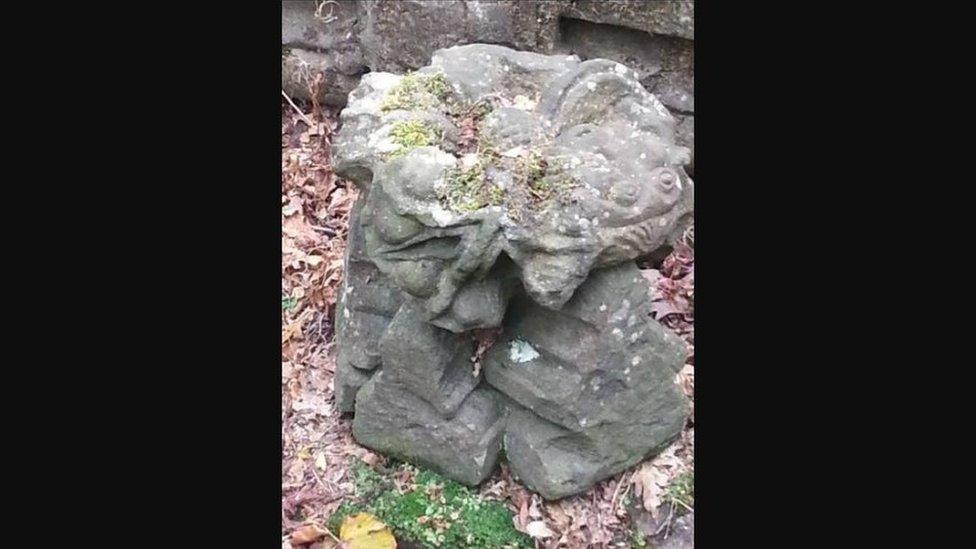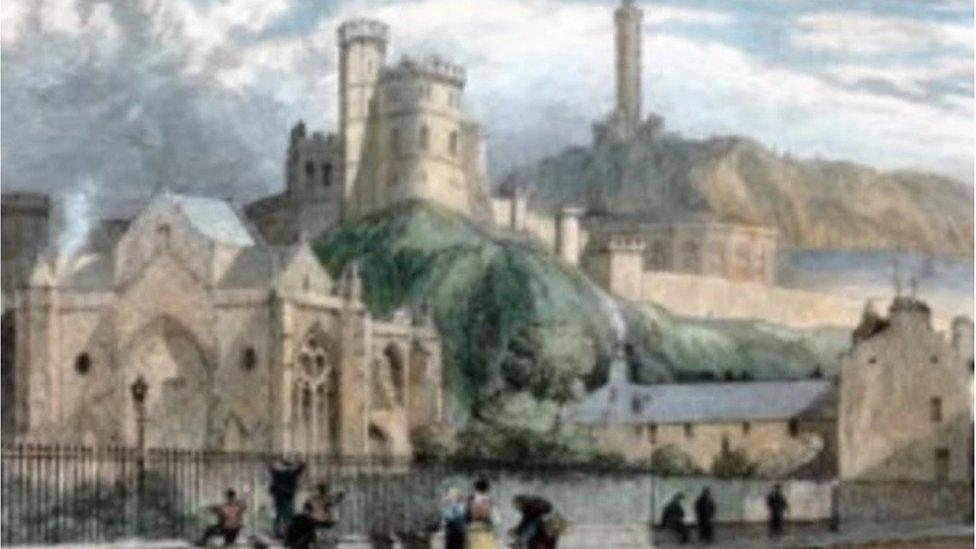Medieval stones stolen from Edinburgh hospital
- Published

A pair of 600-year-old carved stone bosses, thought to have adorned the original Trinity Collegiate Church, have been stolen from the grounds of an Edinburgh hospital.
The late-medieval masonry was stolen from the Astley Ainslie Hospital.
It is not known how the stones came to belong to the hospital in the mid 1800s.
The church was demolished to make way for the construction of Waverley Railway Station.
The Apse from the church was rebuilt and can still be found behind Market Street.
It is believed the stones were taken between late February and early March.

The stones were thought to have adorned the Trinity Collegiate Church
Richard Lewis, Edinburgh's culture convener, said: "For an ancient capital city like Edinburgh, heritage crime is a real concern.
"These decorative stones may not appear like important architectural features to the untrained eye but they have been on the site of Astley Ainslie since the church was demolished in the mid 19th Century. Any assistance the public can provide would be very welcome."
The City of Edinburgh Council's Archaeologist, John Lawson, added: "The stones are cylindrical and bear distinctive sculpted emblems of the Passion of Christ.
"They must weigh at least 300kg each and are about 45cm by 60cm wide.
"Whoever has removed the stones may be unaware of their historical significance. They could even be using them as garden ornaments."
'Historically important'
He added: "The stones are nationally important and are rare survivors of Scottish Medieval art therefore their loss is of great concern.
"We are appealing for their safe return."
Ron Finlay, of NHS Lothian, said: "These historically important artefacts formed part of a collection of stones of ecclesiastical origin which are located within the Astley Ainslie Hospital site, and have been there for many years.
"They are a familiar sight to local people and we hope someone, somewhere can step forward with information. We are hoping for their safe return."
Insp Graeme Nisbet, of Police Scotland, said: "We believe that the stones were taken from the grounds of the hospital sometime between February and March and are continuing to conduct inquiries into this.
"The stones are very distinctive and we would urge anyone who can help us establish their whereabouts to get in touch with us."